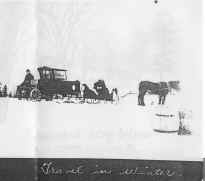 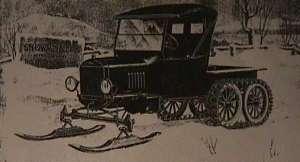 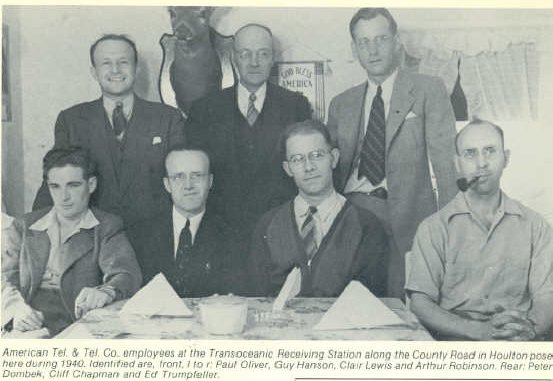 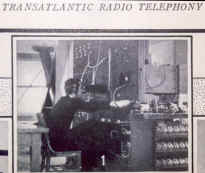 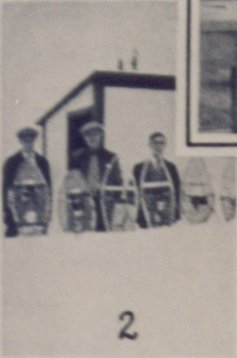 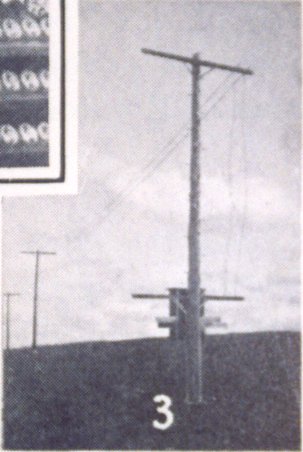 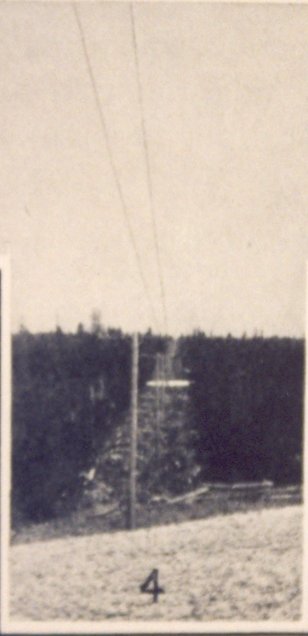 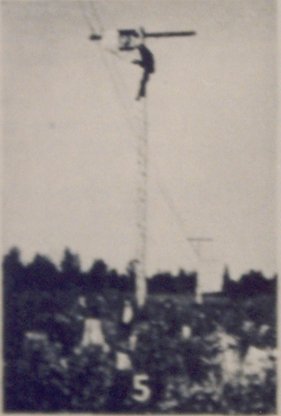 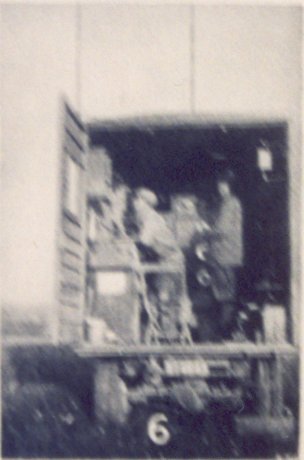 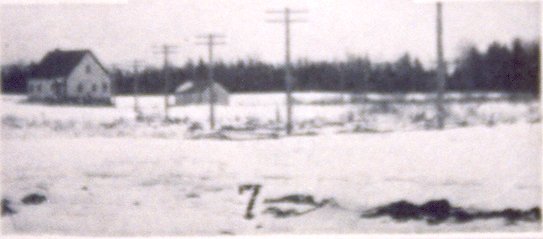  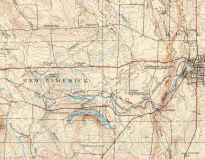
HUMAN VOICES SPAN THE OCEAN VIA RADIO-PHONE
Forty Different Conversations Between London and New
York Mark Successful Inauguration of First Trans-Atlantic Radio-Telephone
Service on a Commercial Scale
Bangor Daily News
Front Page
January 8th, 1927
NEW YORK, Jan. 7-(AP)-The English accent and the voice of New York
passed each other in mid-air and mid-ocean today, in more than forty
different conversations, marking the successful inauguration of the first
trans-Atlantic radio-telephone service on a commercial scale.
In less than an hour, flying on waves with the speed of light, business
to the extent of more than $6,000,000.00 had been transacted by bankers, a
news agency had received the first commercial radio-telephone news
dispatch sent from London, and business men and others were waiting for
the wire.
Thereafter, from before noon until 6:30 o’clock in the evening in New
York and 11 o’clock in the night at London, the line was busy with
business, comment on the times and weather, and occasional staccato
outbursts of static.
The line was officially opened at 8:44 a.m., when President Walter S.
Gifford of the American Telephone and Telegraph Company took down the
receiver and asked to be connected with Sir G. Evelyn P. Murray of the
British General Post Office.
A half a minute later the two were talking seated some 3,500 miles
apart with high seas, western England, and 6,800 miles of ‘circuit route’
between them.
It was the last auspicious conversation of the day, for despite its
ceremonial significance, static crashed and spit as the waves of talk from
London came through the air across the Atlantic near Houlton, Me., the
American receiving station.
During the five minutes frequent London repetitions were necessary. New
York apparently suffering from London’s lack of short wave sending
system, such as helped carry the New York voices eastward.
Within half an hour sending seemed clearer, conversers reported and
engineers explained that practically all of the inconvenience could be
traced to static, believed to be induced by a low barometric pressure
hanging over Houlton.
Newspapers and the Associated Press were the first to avail themselves
to the new means of communication.
Adolph S. Ochs, publisher of the New York Times, was called to talk to
Geoffrey Dawson, editor of the London Times at 8:56 a.m., seven minutes
after the inauguration call had ended and President Gifford, sitting among
reporters, photographers and officials of the company had hung up the
receiver.
At ten and one-half minutes past nine o’clock, the editors of the
London Express and the New York Evening World were chatting together over
the fact that the sun was shining in London as well as in this city. The
call came through from London.
The Associated Press, at 10:02 a.m., called its London bureau from New
York and received here the first news dispatch to be transmitted to a news
agency over the new commercial service. The Associated Press received
another dispatch when the two-way conversations were first found
practicable.
The dispatch today told of an expected visit to Canada and the United
States of the Prince of Wales. Through Speyer & Company, and J. &
W. Seligman & Co., the Central News Ltd., at 10:37 a.m., was given the
first financial news dispatch which concerned the activities of the new
owners of the Victor Talking Machine Co. and their intended policy abroad.
Business transactions came early in the day. The foreign exchange
department of the International Acceptance Bank placed one of the first
calls, completing a $5,000,000.00
foreign exchange transaction with the Midland Bank Ltd., overseas
branch, London.
When the deal was consummated the Midland Bank called the International
Acceptance Bank and arranged a foreign exchange transaction involving
$1,000,000.00, the two calls necessitating the eventual use of five
currencies.
Sir Arthur Worley, C. B. E., London called C. F. Shalicross, United
States manager of the North Britain Mercantile & Insurance Company. He
announced that the new service would be resorted to frequently in the
future in adjusting claims.
At 3:52 o’clock this afternoon, London and Newark were in
communications on a ten- minute call by Sir Woodman Shurbridge of Harrod’s
Ltd., the department store. Sir Woodman talked with Lewis Bamburger,
president of L. Bamburger & Company.
So numerous were the individuals who had applied to talk, at $25 a
minute, that the service originally scheduled to close at 1:30 o’clock,
was continued an additional four and one-half hours.
Another full slate has been booked for tomorrow, it is known, and while
most calls for the two days range under five minutes, which is two over
the minimum requirement, officials say the calls will get longer as
business more generally supplants wonder in the use of the service.
Despite today’s static, which had almost entirely disappeared toward
later afternoon, the service was tonight declared to have proved to be a
technical success. The static at first declared to have been due to
atmospheric conditions off Houlton, Me., was later believed to have been
caused by English Channel conditions.
"Today’s conversations, however," said one official of the
American Telephone and Telegraph Co., "was technically satisfactory,
considering the worst static present in a month; its extension to other
sections of the country was eventually probable to the 10,000,000
telephones here, is up to the public."
An engineers’ chart of today’s telephone activities showed
prevalence of static during most of the day, but communication was
possible, despite this, except for brief breaks.
From 8:57 a. m. when the New York Times was on the wire, until 11:10
a.m. the service was "regular" with some static interfering from
11:10 to down in the service.
Communication was reestablished at 12 noon and continued until 1 p.m.
when there was considerable static until 1:45. At 1:45 fairly good
communication was noticed until 3 o’clock and from 3 o’clock until
closing time at 6 o’clock transmission and reception was better than at
any previous time.
Forty-four persons had filed applications in New York through the
regular channels to talk the first day. Of those, six cancelled their
calls.
London accepted 37 calls for the day, five of which were cancelled and
nine more were filed today for transmission, "In sequence",
either today or tomorrow.
Transcribed April 18th, 2003 from microfilm prints of Bangor
Daily News article of the title above. Harold E. Nelson, 14 Hill Avenue,
Newport, ME 04953.
|